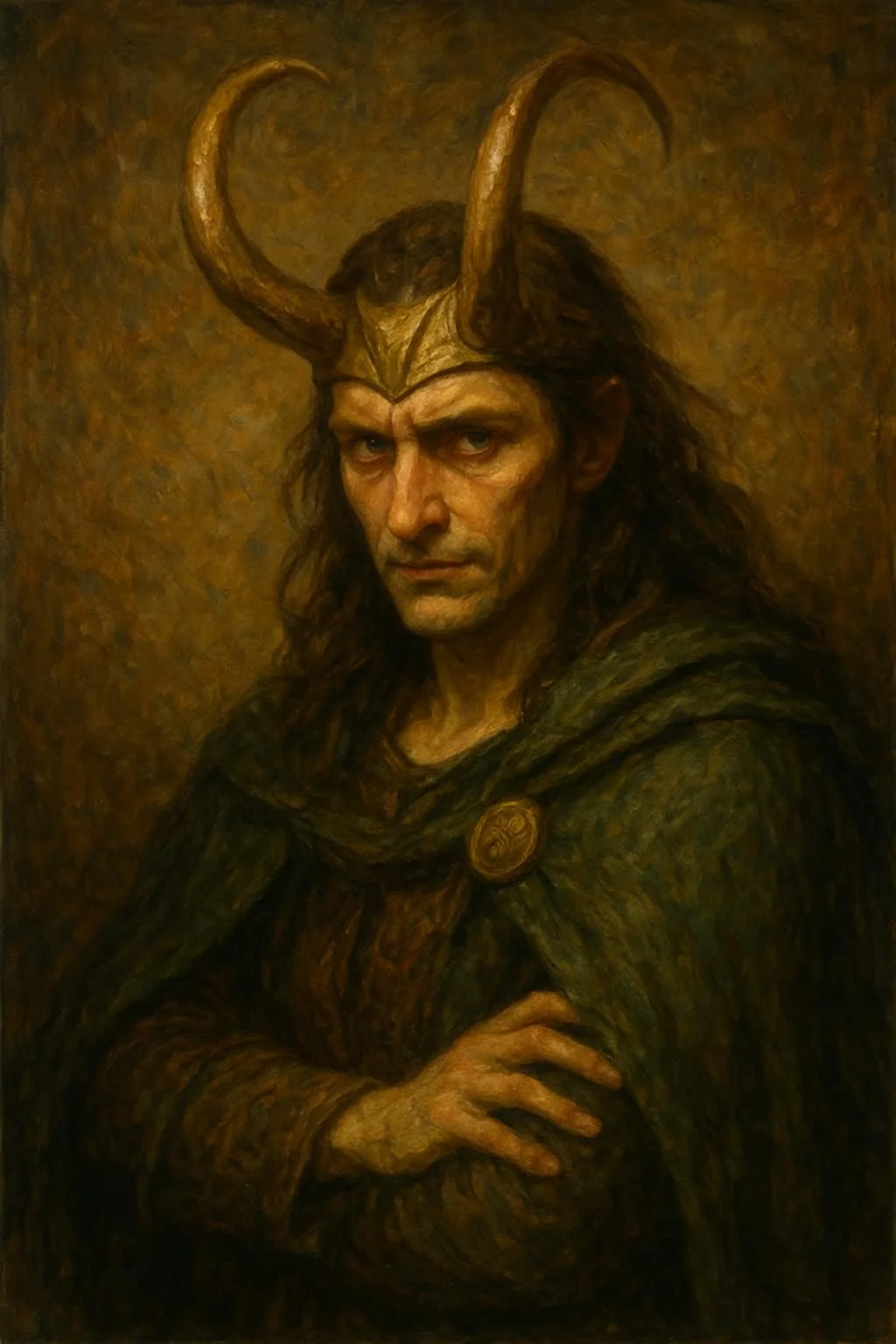
Bragi: The Voice Between Worlds
Bragi, the Norse god of poetry, is more than a keeper of songs- he is the voice that binds memory to meaning, story to soul. Where Thor wields thunder and Odin gathers wisdom, Bragi preserves what would otherwise be lost to silence. He turns deeds into legend, sorrow into song, and truth into immortal verse. In the halls of Asgard, he raises the bragarfull - the sacred cup of oaths - reminding gods and mortals alike that words carry power. Bragi is the muse of skalds, the guardian of story, and the living heartbeat of culture. Through him, poetry becomes more than art - it becomes survival against oblivion. This is Bragi: the voice between worlds.

Loki: The Flame Between Worlds
Loki: the flame in the dark, the spark of change, the whisper that shatters silence. Neither good nor evil, this restless god moves between worlds — shapeshifter, trickster, and bringer of both ruin and renewal.
In this in-depth exploration of Norse mythology, we trace Loki from the ancient Eddas to the fires of Ragnarök and beyond. You’ll meet the sly companion of Odin, the maker of miracles and monsters, the bound god beneath the earth, and the unbound flame who brings about the world’s end — and its rebirth.
Through myth, symbolism, and modern reflection, Loki: The Flame Between Worlds explores what the trickster teaches us today: that chaos is not the enemy of order, but its necessary partner.
Fire burns, but it also gives light. Loki reminds us that every ending is a beginning — and that the spark of change lives in all of us.

Thor: The Thunderer, Defender of Worlds
Thor, the mighty thunderer, is one of the most iconic gods in Norse mythology. Wielding his hammer Mjölnir and riding across the storm-tossed sky in a chariot drawn by goats, Thor embodies raw strength, protection, and defiance in the face of chaos. Beloved by farmers and feared by giants, he is the defender of both gods and humans, a force of thunder who blesses, hallows, and protects. This post explores Thor’s role as warrior, hall-companion, giant-slayer, and doomed hero, whose story still thunders across time.

What is Norse Paganism?
Norse and Germanic paganism is more than ancient myth — it is a living worldview built on deep values of honor, kinship, reciprocity, and respect for nature. Rooted in the traditions of pre-Christian Northern Europe, it teaches us how to live with balance, how to honor our ancestors, and how to find the sacred in both everyday life and the turning of the seasons. From the World Tree Yggdrasil to the runes and seasonal festivals like Yule and Midsummer, this path offers timeless wisdom for personal growth and meaningful living.

Odin, the Allfather - The one eyed God of the north
Odin, the Allfather of Norse mythology, is the one-eyed god of wisdom, war, poetry, and magic. Unlike his son Þórr, who rules with strength, Odin relies on cunning, sacrifice, and secret knowledge. Followed by his ravens Huginn and Muninn and his wolves Geri and Freki, he reigns over Valhalla, guiding the souls of fallen warriors. With countless names and ancient roots stretching back to the earliest Germanic peoples, Odin embodies both fury and inspiration, both ruthless ruler and restless wanderer. His myths reveal a god who sacrifices endlessly in his pursuit of wisdom, shaping him into one of the most complex and enduring figures of the Norse pantheon.

Begin the Path: Understanding the Wyrd, the Flame, and Your Own Calling
New to Norse spirituality? Or feeling the stir of something ancient calling your name?
This post lays the foundation — explaining what Wyrd truly is, how the gods speak in flame and vision, and how to begin your spiritual journey in alignment with truth, not trends.
You’ll learn the basics of Norse cosmology, what it means to walk as a Seer or spirit-worker, and how to connect with the gods and ancestors with respect, strength, and clarity.

The Beloved God Baldr: Light, Hope, and Tragedy in Norse Mythology
Baldr, the radiant god of light, joy, and purity, stands as one of the most beloved figures in Norse mythology. Son of Óðinn and Frigg, he embodied beauty and nobility so great that even the flowers were said to bow as he passed. Yet despite his perfection, Baldr’s greatest role was tragically to die - his fate sealed by mistletoe, Loki’s trickery, and the hand of his blind brother Höðr. His death set in motion the events of Ragnarök and became a timeless story of vulnerability, betrayal, and destiny. In exploring Baldr’s tale, we find lessons not only of sorrow but also of hope, light, and resilience that continue to inspire today.

Gullveig: The Witch Who Shaped the Fate of the Gods
✨ Gullveig: The Volva Who Shaped the Fate of the Gods ✨
Few figures in Norse mythology carry as much mystery—or as much weight—as Gullveig. Burned three times and reborn from the flames, she embodies truth, transformation, and the dangerous power of seiðr.
Her presence shattered the fragile balance between the Æsir and Vanir, igniting the only great war among the gods. She is both victim and catalyst, a mirror of greed and corruption, and a weaver of golden threads that bind even the gods to their fates.
Was she a Vanir witch? A forgotten Norn? An early form of Freyja herself?
What we know is this: without Gullveig, the mythic struggle that drives the fate of the cosmos—and Ragnarök itself—would never have begun.



